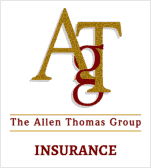How To Protect Your Business From Cyber Security Threats?
Protecting a business from cyber security threats involves implementing measures such as using strong passwords, regularly updating software, and training employees on safe online practices. It is also important to have a backup plan in case of a breach and to regularly monitor network activity for any suspicious behavior. Taking these steps can help prevent costly and damaging data breaches.
We all know that a potential cybersecurity breach is a business’s worst nightmare: the potential for the loss or theft of data, the cost of repairs to the system, the time it takes to recover, and perhaps most dangerous of all, the loss of trust from your customers or community.
In this digital world, cyber security risks are an ever-present threat for businesses, making it increasingly vital for companies to be prepared for the possibility of a breach and know the necessary steps to take to contain and mitigate any potential damage.
In this article, we will provide tips on protecting your business from cybersecurity risks so that you can stay one step ahead of the game.
Quick Explanation of Key Points
Businesses can reduce their risk of cyber security threats by implementing rigorous password protection policies, encrypting data, and regularly updating software and firmware.
Companies must also ensure proper staff training and awareness of the latest cyber security threats.
Awareness of Cyber Security Risks
Heeding awareness of cyber security risks is the foundational key to mitigating those risks. Human negligence often leads to unexpected catastrophes, making employee training and education vital in developing a thorough security program.
Introducing employees to cybersecurity-related topics, such as phishing, malware, ransomware, and data breaches, should be regularly communicated during onboarding, reinforced through periodic training sessions, and updated when needed.
Offering incentives or penalties can also help strengthen a business’s cyber security posture. Rewarding employees who go above and beyond in protecting company data from external threats or holding those who take actions contributing to potential risk liable for damages increases engagement.
It establishes corporate culture around cyber security awareness. Additionally, providing users access only to documents and internet resources necessary to their jobs adds an extra layer of defense similar to compartmentalizing networks.
We live in an age where technology is ever-evolving and changing rapidly; that fact alone should be enough incentive for organizations to continually enhance the knowledge base of their staff so that they are aware of emerging threats and trends in the cyber security world.
The more proactive businesses are about investing time, money, and other resources into user education and training, the greater their chances of avoiding potentially devastating harm brought on by cyber attacks.
Now that we have discussed awareness of cyber security risks, let us move on to the next step towards understanding how best to protect our business – exploring the most common threats to identify them better before they cause any damage.
Key Takeaway
Cyber security risks can be mitigated by properly training and educating staff members. Incentives, rewards, and access restrictions to documents and resources can also strengthen security measures. Organizations should continually upgrade employees’ knowledge base to be aware of the latest cyber security threats and trends. This will reduce the likelihood of a devastating cyber attack occurring.
What are the Most Common Cyber Security Threats?
Awareness of cyber security risks and potential threats is essential, but it is equally important to identify those threats.
Businesses face Common cyber security risks, including malicious software, denial-of-service attacks, data breaches, and social engineering.
Malicious software, which can be spread through a network or an email attachment, can include viruses, trojans, spyware, ransomware, keylogger malware, and backdoors.
A denial-of-service attack uses up the resources of a server by flooding it with requests to make it inaccessible to its intended users. Data breaches occur when confidential information is accessed and stolen without authorization.
Social engineering refers to manipulating people into providing access to personal information or systems by exploiting human psychology.
The severity of any of these threats varies depending on the type and size of the business and its individual needs. Large companies may be at a higher risk for data breaches due to the amount of data they possess. In comparison, smaller businesses may have a higher risk from malicious software because they typically lack certain technical safeguards. Businesses must evaluate their individual needs and vulnerabilities so that they can assess their risk profile and develop corresponding countermeasures.
Understanding which types of cyber security threats are most common is the first step towards protecting your business; solution implementation involves an entirely different set of efforts and strategies.
When done correctly, implementing solutions can create an effective defense against cyber security risks and vulnerabilities while helping organizations sustain continuity if any threat arises.
In the next section, we will discuss precisely how to go about this process in detail.
Key Stats:
- According to a 2022 report, 42% of small businesses experienced a cyberattack in the last year. Nearly half (41.8%) of all small businesses were the victim of a cyberattack in the last 12 months,.
- According to Bleach Cyber, the direct financial cost of cybercrime is staggering. In 2018, the average cost of a data breach was $3.86 million. For small businesses, that number is even higher, with an average cost of $2.2 million per attack.
- In 2017, the global cost of cyber security incidents was estimated to be over $600 billion.
Implementing Solutions to Mitigate Vulnerabilities and Risks
Now that entrepreneurs understand the most common cybersecurity threats, taking the proper steps to mitigate those vulnerabilities is imperative.
Implementing solutions to reduce risks, such as firewalls and antivirus software, is essential to protect a business from cyber attacks.
There is substantial debate about the effectiveness of antivirus software and asset management solutions. While antivirus software may detect and remove some types of malicious software, it is not a foolproof solution; malware authors regularly develop new strains that go undetected by these applications. On the other hand, asset management tools track system changes and can alert when nefarious activity occurs. It is essential to understand which solutions are best suited for specific threats.
Businesses should also put processes in place to shift responsibility for data security across the organization rather than one individual alone. This provides accountability so everyone understands their obligation to protect their assets and data from attack or misuse. Moreover, organizations need to increase employee awareness by providing adequate training on cybersecurity best practices and developing comprehensive policies. Engaging with experts who can evaluate existing technology systems can help identify weaknesses and provide recommendations on addressing them.
Investing time and resources into solutions that protect against cyber security threats is never easy; however, taking proactive preventative measures will benefit businesses. As a next step, let us explore why it is so important to implement preventive measures now rather than later.
The Benefits of Preventative Measures
When it comes to protecting businesses from cyber security risks, preventative measures are key. Implementing solutions before a vulnerability or risk becomes an issue is the most effective way to reduce the chances of any significant security breach or issue arising.
During this stage, it is wise to update and analyze the systems regularly for possible threats or malicious software and train employees to recognize and respond to potential threats.
The main benefit of preventative measures is the financial aspect – by being proactive, businesses can save money by not needing to hire external help when dealing with any security issues that may arise from an unsecured system. Furthermore, reducing the likelihood of extensive damage done, which could have occurred without preventative measures, helps companies save even more. It also ensures the safety of confidential data and customer information without worrying about a breach or conversion.
Taking preemptive steps can provide business owners with peace of mind. By having a threat recognition system in place, factors such as phishing emails can be identified quickly so immediate action can be taken accordingly.
This gives businesses more security over their information, preventing potential threats from occurring in the first place while also significantly improving organizational policies regarding internet safety standards.
Overall, the advantages of preventative measures far outweigh not implementing any. Regardless of size or industry, every organization should take proactive steps to ensure complete security and avoid a costly incident or breach.
With this in mind, there are countless resources available out there that businesses can take advantage of to protect themselves and their information from cyber security risks.
Some of these resources include managed services providers who monitor systems closely and ensure security software is up-to-date for maximum protection and education – both onsite training and online seminars – that aid in increasing knowledge on cyber security trends among employees.
Resources Available to Help Businesses Protect Information and Data
The benefits of preventative measures to combat cyber security risks have been well established. Now, businesses should consider the resources available to further protect their information and data.
Small businesses may struggle primarily due to cost constraints and lack of system resource access. Larger companies may also work due to the changing nature of technology and constantly evolving regulations they must abide by. It is essential for every business size to have a plan that identifies what information needs protection, outlines the security measures required, and ensures regular maintenance of systems and software.
For instance, vendors like Symantec have several programs offering services such as secure FTP (file transfer protocol) uploads, automated database backups, remote user access controls, and incident response plans. Along with vendor services, there are also independent consulting firms that specialize in IT security or free software available online that can assist with prevention strategies — such as allowing only certain types of file formats or authentication processes on corporate networks.
Additionally, organizations should invest in training employees on best practices when using personal devices while accessing corporate networks since ensuring safety involves reinforcing user awareness and behavior.
Fortunately, a wide variety of cybersecurity solution options exist to help ensure the safety of sensitive data and protect companies from malicious intrusions. However, malicious activities have recently increased, which all businesses must be aware of. We will delve further into this topic to better understand how hackers can affect businesses.
How Hackers Can Affect Businesses
Hackers can affect businesses significantly, though the extent and implications of these attacks can vary depending on individual organizations. Hacker attacks can lead to data breaches, system malfunctions, reputational damage, and a significant financial cost.
Contrary to popular belief, even those with large networks and security systems are still at risk of being hacked; At the same time, financial profit schemes drive many hackers; some are simply looking to spread chaos and wreak havoc on business networks for malicious reasons.
These actions can lead to distrust among customers, regulatory action such as fines and investigations, the need to hire external security resources, or new technologies that may be costly. Small businesses also open themselves to liability if their security measures are insufficient and keep personal customer data at risk from cyber criminals.
While you can do nothing to eliminate the threat of hackers completely, it’s important to remember that organizations of any size or type can take steps to protect themselves using security resources or internal safeguards. Properly implementing security protocols and procedures and staying updated on the latest security trends can help mitigate threats so that a comprehensive system is in place when needed. Having a plan for responding quickly and effectively can go a long way in ensuring business operations continue running smoothly even after an attack has happened. With proper preventive measures in place, businesses will be more confident taking on whatever threats come their way and quickly adapting should any issues arise.
When starting a new business venture, remember how vulnerable your enterprise might be without proper cybersecurity measures.
A few small investments now could save you time, money, and possibly even a reputation further down the line.
Understanding potential risks gives you more peace of mind as you confidently move forward toward your business goals.
Tips for New Businesses Starting Off
New businesses are especially vulnerable to cyber security threats.
They lack the resources of well-established companies, meaning they often cannot correctly mitigate cyber risk. As such, new businesses should take extra care to ensure their data and networks are protected from malicious actors. Here are some tips for new companies starting:
1. Prioritize Security: For new businesses, staying ahead of cyber threats should be a top priority since the costs of dealing with a successful attack could cripple the business before it can get off the ground.
Investing in security solutions can save money in the long run by stopping an attack before it happens.
2. Train Employees: Employees play a critical role in keeping data and networks safe, but not all employees understand the importance of proper cyber security hygiene.
New business owners must train their staff to recognize phishing attacks, securely handle customer data, and adhere to company policy regarding passwords and other sensitive information.
3. Purchase Comprehensive Insurance: A comprehensive cyber insurance policy will cover any legal costs or damages that arise during a successful attack.
These policies may also include public relations services, allowing companies to recover from data breaches more quickly since repairing their reputation is essential for success.
4. Develop Contingency Plans: No one likes to think about the worst-case scenario, but good preparation can help reduce the impact of a cyber security event if one occurs.
New business owners should develop contingency plans for how they will respond if an incident occurs to maintain control over their assets and customers while minimizing damage and mitigating the effects of theft or vandalism.
Taking these steps can provide significant protection for new businesses facing potential cyber threats so that they can get up and running without interruption.
While no system is perfect and attacks are always possible, following these guidelines can be invaluable in helping new businesses protect themselves from hackers and other malicious actors.
Frequently Asked Questions
What proactive measures can businesses take to reduce the risk of a cyber security breach?
Businesses can take several proactive measures to reduce the risk of a cyber security breach. Firstly, they should ensure all computers and mobile devices are protected by antivirus software and kept up-to-date.
Additionally, businesses should implement regular backups so that if sensitive data is lost, it can be restored quickly from an off-site location. Furthermore, companies should regularly monitor their systems for suspicious activity and act quickly should any threats be identified.
Other measures include implementing a firm password policy requiring users to change them and using two-factor authentication for login regularly.
Organizations should also maintain firewall protection and encryption to protect networks further.
Lastly, businesses should ensure staff is educated on spotting potential risks to their data security and using best practices when handling customer or company data.
What best practices should businesses adhere to regarding cyber security?
Businesses should adhere to best practices for cyber security, such as:
- Identifying and tracking assets: Knowing what information and systems the business possesses gives the ability to respond to any threats quickly.
- Establishing authentication and access controls: Creating strong passwords, two-factor authentication, and other verification methods helps protect against unwanted access.
- Implementing firewalls and antivirus software: Firewalls can help block malicious activity from entering a network, while antivirus software can help detect and remove any malicious code that does make it through.
- Establishing policies for security events, training, and awareness: Security events such as annual password resets or security audits should be implemented to stay current on cyber threats. Employees should also undergo regular training to identify potential security risks and be aware of proper protocols in the event of a breach.
- Backing up data regularly: Having an updated backup system helps minimize data loss in a security breach or outage.
By following these best practices, businesses can safeguard their information and networks from cyber threats, ensuring continuity and efficient operations in the long run.
What are the most common cyber security risks that businesses should be aware of?
The most common cyber security risks that businesses should be aware of include phishing, malware, data breach, ransomware, distributed denial-of-service (DDoS) attacks, and social engineering.
Phishing is a cyberattack that occurs when malicious actors attempt to trick users into giving up confidential information, such as passwords or credit card numbers, by disguising themselves as legitimate sources in an email or text message.
Malware is malicious software designed to damage or turn off computers and networks. It can take many forms, including viruses, spyware, adware, and ransomware.
A data breach occurs when unauthorized parties access confidential or sensitive data. This attack can lead to significant financial losses, reputational damage, and loss of customer trust.
Ransomware is malware that holds a user’s files and data, hostage until they pay a ransom fee. Once the attacker has access to the victim’s system, they can encrypt important documents and threaten to delete them unless the ransom fee is paid.
Distributed denial-of-service (DDoS) attacks occur when multiple compromised systems flood the bandwidth or resources of a targeted system with traffic from various sources to overwhelm it and render it inaccessible.
This attack usually involves bombarding techniques with massive amounts of data from dispersed networks or computers to bring down websites or other online services.
Finally, social engineering is an attack by convincing people to give away sensitive information such as passwords or credit card numbers through manipulative techniques like impersonation or phishing emails. Social engineering tricks often rely on exploiting human psychology rather than technical weaknesses.
Secure Your Business Today with The Allen Thomas Group
Protecting your company from cyber security risks should be a top priority as a business owner.
The threat of cyber-attacks is ever-present, and the consequences can be devastating. But with the right mitigation strategies, you can protect your business and clients from harm.
At The Allen Thomas Group, we understand the importance of safeguarding your digital assets.
Our team of experts can help you assess your current vulnerabilities and develop a customized plan to address them. We offer various services, from network security to employee training, to protect your business.
Please don’t wait until it’s too late to take action. Contact us today to learn more about how we can help you safeguard your business.
With The Allen Thomas Group on your side, you can rest easy knowing that your company is secure and protected from cyber threats.
Author















